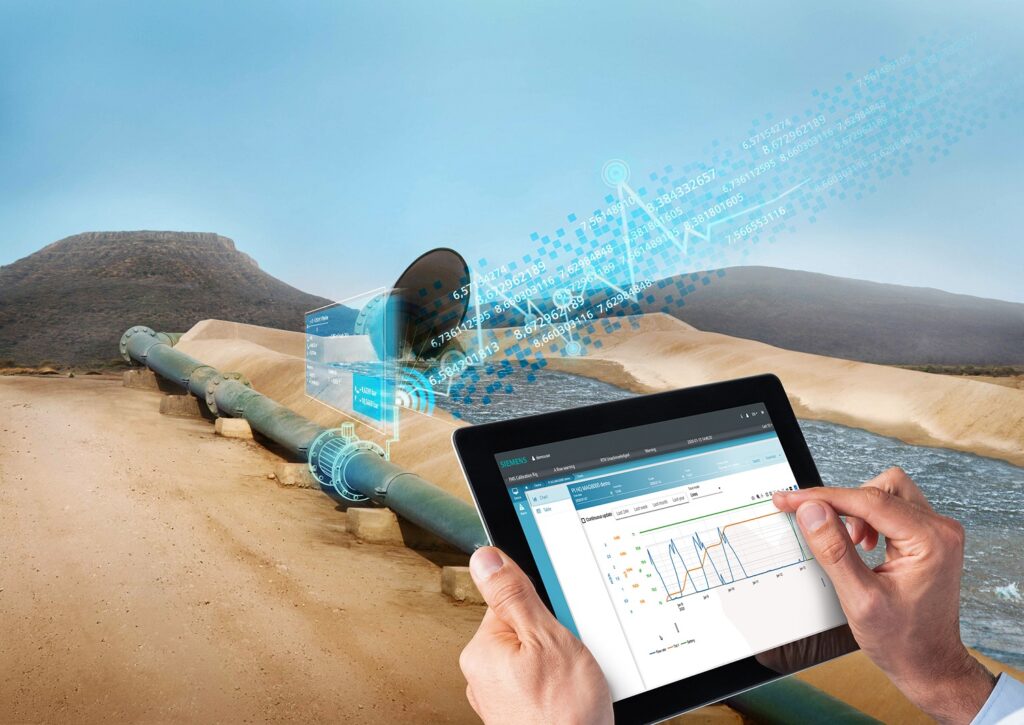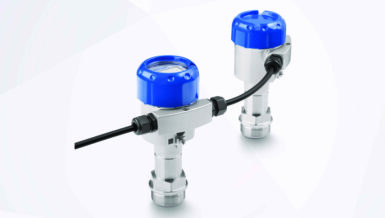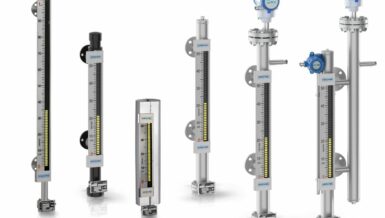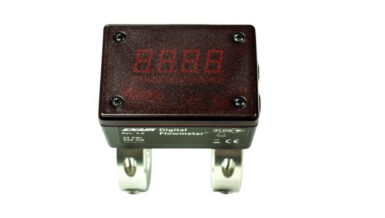Hydrostatic pressure transmitters, ultrasonic level transmitters, and even radar transmitters can all be used, but nothing surpasses the ability of a full-fledged level controller to accurately monitor level while also controlling the pumps needed to move enormous amounts of water.
Advanced level controllers are designed with many built-in functions that are easy to implement using quick wizards that eliminate the need for expert support. This article will focus on the pump control functionality of this technology and how it can help to optimize your process.
Opinion varies as to which pump duty is the most beneficial in a water pumping system – but consider the fact that not all systems are designed equally. Thus, defaulting to a single pump scheme may not be the most ideal strategy. For example, what if the efficiency of a particular pump degrades and it takes 10 or 20 percent longer to do the job? Running for additional time translates to increased energy usage and thus higher operating costs. (It is a well-known fact that pumping systems account for one of the highest operating costs at a treatment plant – second only to payroll). What if you are unable to perform maintenance on this pump for two weeks? That is two weeks of excessive energy use due to the extra time required to complete the pump cycle. This inefficient pump could have operated only 30 percent of the time or been taken out of the lead sequence to minimize usage until maintenance could address the issue. The pump and control algorithms discussed below can shed some additional light on strategies to improve overall efficiency.
Let us explore the various pump routines that are available with some advanced level controllers, such as the SITRANS LT500 and the HydroRanger 200 from Siemens. The benefit of using this type of multifunctional instrument is that a single device can do the level measurement and control how or when pumps operate in a wet well, lift station, or distribution network. There are even level controllers with the ability to monitor the level of two assets independently (e.g., two well wells or a wet well and a chemical tank). Different controllers are designed with one, three, or six relays. If you are managing two pumps, a level controller with six relays can perform the same task twice and use the spare relays for another task such as level alarms.
It should be noted that certain solutions on the market offer some pump control functionality and can be used for managing pump alternation to ensure they run an equal amount of time, but they will depend on another instrument for the level input to activate the pump’s on and offset points. However, there is more to pump control than simply turning pumps on and off. In today’s data-driven world, instrument data collection can prove beneficial for improving processes and efficiencies. This type of data can be collected with advanced level controllers and logged, accessed, or transmitted utilizing any available industrial communication protocol.
By exploring different pump control strategies, you will not only reduce energy consumption but also potentially increase the lifetime of a pump. Before we take a closer look at different routines, let us define some key terms. Pump control methods are dependent on several variables, including pump sequences, duty assist, and duty backup, which are control algorithms to activate the relay(s).
Pump sequencing determines the sequence pumps are started using a fixed, alternate, or service ratio routine.
Pump assist or backup indicates whether a running pump stays operational or shuts off when a new pump starts.
With that, let us explore different combinations to aid in determining which scheme is most suitable for the pumping system at hand.
Fixed sequence starts pumps based on individual setpoints (e.g., when the liquid level reaches 6 ft and then 10 ft) and always starts and stops the same pumps in the same sequence. Available settings for a fixed sequence are:
- , which sets the control algorithm to activate a pump or multiple pumps to run at the same time. In a two-pump system, pump two will assist pump one to lower the liquid level and both will turn off when they reach their respective off points. This is practical for a small-capacity wet well or lift station where a spill can prove costly or odorous.
- , which sets the control algorithm to activate the pump relay and only one pump can run at a time. The relay contact closes at the on setpoint and opens at the off setpoint. When a new relay trips, the previously closed relay contact opens to shut down the running pump.
Alternate sequence is one of the most popular schemes used. It is easy to understand what is occurring since the pumps simply alternate back and forth when the respective on point comes up. The drawback is that since both pumps are used equally, they will also wear equally and require maintenance at the same time. Available settings for an alternate sequence are:
- Alternate duty assist, where pumps start based on the duty schedule and the sequence always leads with a new pump. As the liquid level rises, pump one turns on, and if the level continues to rise, pump two will assist. The pumps switch as the liquid level lowers to the off point, and then pump two becomes the lead pump with pump one assisting as needed. The pumps continue to rotate back and forthto ensure the load is shared equally between them and usage remains even.
- Alternate duty backup, during which the sequence alternates the lead pump each time the material level cycles, but only one pump runs at a time. If both pumps are of large capacity, they can keep up with peak flows when activated to run. However, this method is not very efficient for low volumes of water, since large pumps draw more power each time they start.
Service ratio sequence starts pumps based on a user-defined ratio of running time. Just as with the other sequences, the algorithm settings for duty assist and duty backup are also available here.
In a service ratio duty assist application, the ratio determines which pump will turn on and which will assist. In a one-to-one ratio, both pumps will run for the same amount of time. In a two-to-one service ratio, pump one will run twice as long as pump two during the pumping cycle.
A good example of a service ratio duty assist application consists of one high-capacity pump and another with a lower capacity, in which we want to use the larger-capacity pump more than the smaller one. This is a scenario where peak flows will occur frequently or seasonally. In the latter, changing the sequence or ratio could lead to some economic or efficiency-related benefits.
Another scenario that might require you to modify the service ratio is one in which a pump’s efficiency has degraded and the pump needs maintenance. You can modify the running time so that the other, the more efficient pump operates for longer. A more efficient pump uses less energy in the long run, so implementing this strategy saves money and allows for a longer window to address the efficiency issue.
One key consideration when using a service ratio duty backup is that if the second pump is not utilized for long periods of time, the potential for sediment buildup is high. Thus, the second pump should be exercised on occasion to ensure it remains in working order.
Pump exercise allows all pumps to be run periodically to avoid pump seizure and reduce inlet clogging. This exercise can be enabled for any pump in an application. The interval and length a given pump is exercised can be controlled by the settings. An advanced level controller will never exercise a pump during a normal pump cycle.
A consideration when using an alternating sequence is that frequent startups do not come without a cost. Startups are the most stressful part of pump operation and can result in greater wear and tear or even premature failure.
As mentioned above, advanced level controllers have many pump functionalities that make them suitable for any water and wastewater application. Besides the pump exercise function, there are other features that have the potential to further optimize your process.
Pump run helps clean out the pump after the level has reached the off setpoint.
Delay between starts sets the minimum delay between pump starts. This feature is used to minimize the chances of a power surge from all pumps starting at the same time.
Power resumption delay sets the minimum delay before the first pump restarts after a power failure. This reduces the power surge from multiple devices starting their pumps immediately upon power resumption.
Conclusion
It is easy to see that advanced level controllers excel not only at level monitoring but also at managing pump systems. Advanced ultrasonic level controllers allow users to monitor each pump’s performance, including pump status, efficiency, and total pumped volume. They can log run time and the number of pump starts. Furthermore, pump performance monitoring shows when pumps are working well, thereby reducing the need for field inspections or unnecessary maintenance.
If you are buying level controllers but only using them for level monitoring, you are in essence leaving money on the table – or even incurring additional expenses by investing in third-party devices to handle the pump control tasks for which a level controller is so well equipped. The pump routines discussed in this article can help manage pumps more efficiently to save energy and, with the right sequence and duty strategy, extend the life of your pumps. Understanding that pump control is so much more than just alternating pumps – and selecting the right level controller to handle your chosen strategy – can truly optimize your process.











